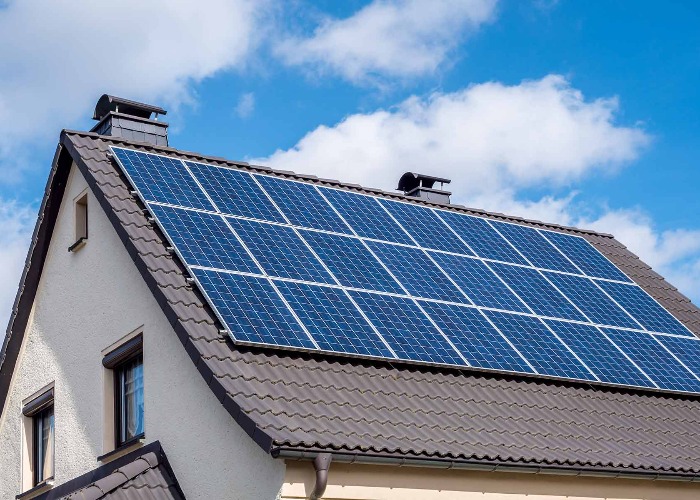How Much Do Solar Panels Really Cost?
June 8, 2024

Solar energy is a sustainable and eco-friendly way to power your home, and it’s becoming increasingly popular across the United States. If you’re considering making the switch to solar energy, one of your first questions is likely, “How much do solar panels cost?” In this comprehensive guide, we’ll dive into the various factors that influence the cost of solar panels, so you can make an informed decision for your energy needs.
Understanding the Basics of Solar Panels
Before we delve into the cost aspects, let’s start with the basics. Solar panels, also known as photovoltaic (PV) panels, are devices that convert sunlight into electricity. They are typically installed on rooftops or open areas with good sun exposure. The energy generated by these panels can power your home, reduce your electricity bills, and even allow you to sell excess energy back to the grid.
Types of Solar Panels
Solar panels come in different types, each with its own set of advantages and costs. The most common types include:
- Monocrystalline Solar Panels: These panels are known for their high efficiency and sleek black appearance. They are made from single-crystal silicon, making them more efficient but also slightly more expensive.
- Polycrystalline Solar Panels: Polycrystalline panels are less expensive than monocrystalline ones but are slightly less efficient. They have a blue speckled appearance due to multiple silicon fragments.
- Thin-Film Solar Panels: Thin-film panels are the least expensive and flexible, but they are less efficient and may require more installation space.
Now that you have a basic understanding of solar panels let’s explore the factors that influence their cost.
Factors Affecting Solar Panel Costs
The cost of installing solar panels can vary widely based on several key factors:
1. Location
The location of your home plays a significant role in determining the cost of solar panel installation. Different regions receive varying amounts of sunlight, and local incentives and regulations can affect the overall cost. For example, in Texas, where sunshine is abundant, solar panel installation costs may be more affordable. To find the best solar companies in Texas, check out our comprehensive list.
2. System Size
The size of your solar panel system directly impacts the cost. Larger systems can generate more electricity but also come with a higher upfront cost. To determine the right system size for your needs, it’s essential to consider your energy consumption and long-term goals for energy production.
3. Quality and Type of Solar Panels
As mentioned earlier, the type of solar panels you choose can affect the cost. Monocrystalline panels, while more expensive, may be a worthwhile investment due to their higher efficiency and longevity. For an in-depth look at different panel types, explore our guide on 260W solar panels.
4. Incentives and Rebates
Many states and local governments offer incentives and rebates to encourage solar panel installation. These incentives can significantly reduce your overall costs. It’s essential to research the incentives available in your area and take advantage of them. If you’re in San Diego, explore the options for solar incentives and compare free quotes.
5. Installation Complexity
The complexity of your installation can influence the cost. If your roof requires extensive modifications or repairs before solar panel installation, it can add to the overall expenses. Understanding the installation process is crucial; learn more about how solar panels are installed to prepare for your project.
6. Battery and Storage
If you opt for a solar battery system for energy storage, it will add to the upfront costs. However, a battery can provide backup power during outages and maximize your energy independence. To find the best solar battery installers near you, check our guide on how to find the best ones.
7. Off-Grid vs. Grid-Tied
Deciding between an off-grid or grid-tied solar system also affects costs. Off-grid systems, which are entirely self-sufficient, may require additional components like inverters and batteries, making them more expensive. If you’re considering an off-grid system, explore off-grid solar installers near you for free quotes.
8. Additional Costs
Don’t forget to factor in additional costs such as permits, maintenance, and insurance when calculating the total cost of your solar panel installation. These expenses can vary by location and system size.
Calculating Your Solar Panel Costs
To estimate the cost of installing solar panels on your property, follow these steps:
- Determine Your Energy Needs: Review your past electricity bills to understand your energy consumption patterns.
- Choose the Right System Size: Based on your energy needs and location, select the appropriate system size.
- Explore Financing Options: Research financing options like solar loans, leases, or power purchase agreements (PPAs).
- Check for Incentives: Find out if there are any local or state incentives or rebates available to reduce your costs.
- Get Multiple Quotes: Obtain quotes from different solar installation companies to compare prices and services.
- Consider Long-Term Savings: Remember that while the initial investment may seem high, solar panels can lead to significant long-term savings on your electricity bills.
Conclusion
In conclusion, the cost of solar panels can vary based on several factors, including your location, system size, panel type, and available incentives. It’s essential to do thorough research, obtain multiple quotes, and assess your long-term savings to make an informed decision about going solar.
Whether you’re in Texas, San Diego, Florida, or anywhere else in the United States, solar energy can be a cost-effective and environmentally friendly choice for your home. So, why wait?
